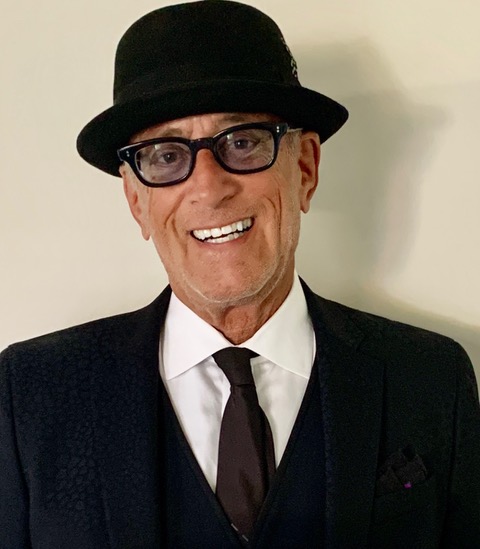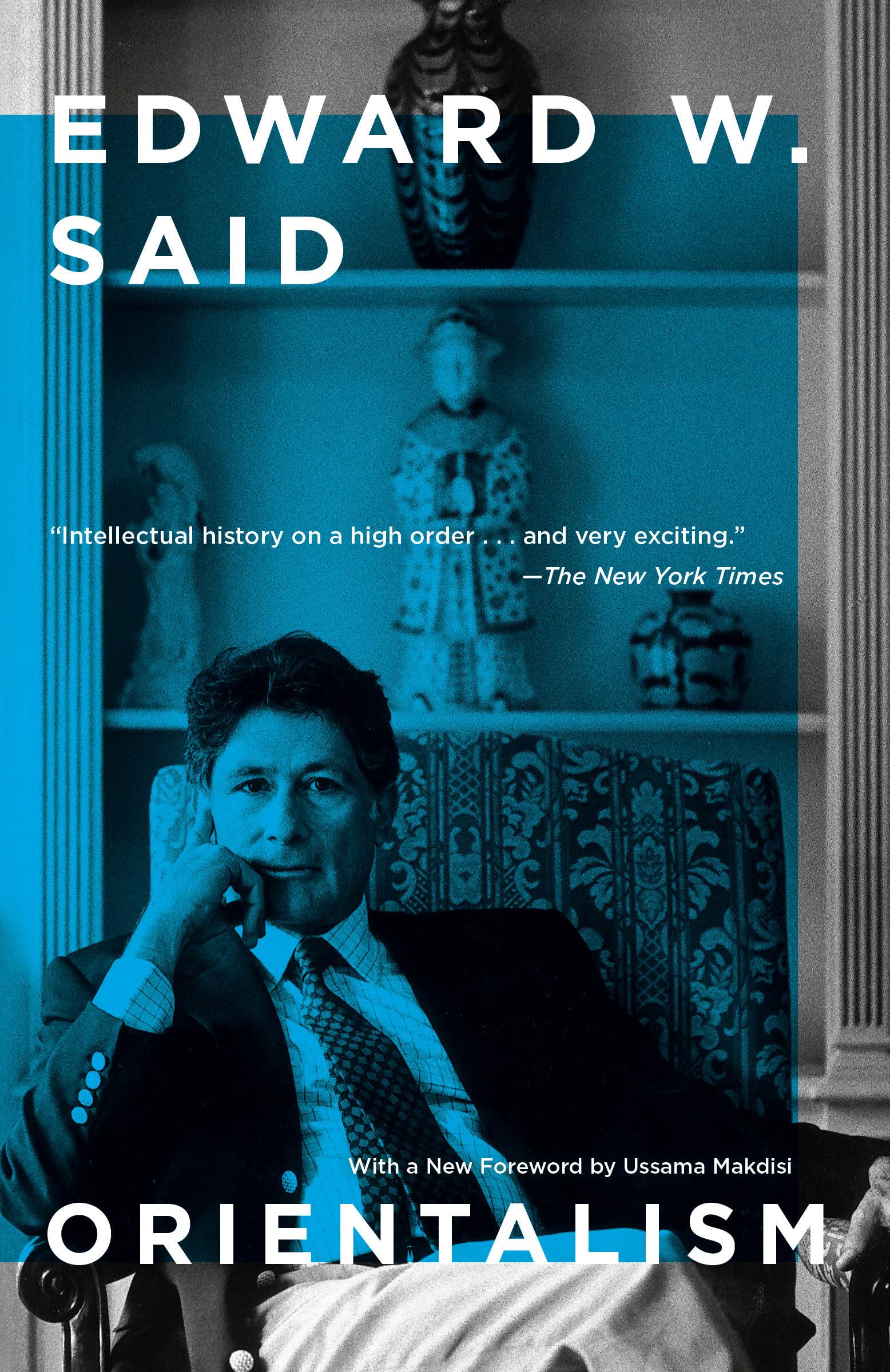Features
Ron Telpner: the adman and his music

By GERRY POSNER Now this is a story. Talk about someone who has had the full package in life and you are talking about Ron Telpner. For those readers too young to remember the Telpner name, Google Gene and Fritzi Telpner (née Shuckett). Gene was a featured columnist for the the Winnipeg Tribune, the Winnipeg Free Press, and The Jewish Post & News. Anyone over 60 would likely have been aware of that.Ron is one of three Telpner offspring, a former resident of the north end, and a graduate of United College and the University of Manitoba, where he acquired degrees in English Literature and Psychology. In 1973 Ron earned a journalism degree from Carleton University in Ottawa. This was but the beginning of a long career followed by challenges far more daunting than his work.
Upon graduating, Ron took his first real job as an information officer with the Province of Manitoba. At the age of only 26 he became the Director of Promotion and Information for the Province of Manitoba. That job proved frustrating for Ron as a result of the slowness of bureaucratic goverment decision making and he soon joined the prestigious McKim Advertising firm in Winnipeg, in 1978.
One year later, he was the manager of McKim. During that time the firm was dominant in the Winnipeg adverting world. Ron created campaigns for the then Premier of Manitoba, as well as Canada’s Finance Minister, during their respective election battles. In 1989, Ron, still with McKim, by then the largest ad agency in Canada, made the big move to Toronto. The direction was clearly set for Ron Telpner.
In 1992, Telpner boldly started his own advertising agency in Toronto, known as the BrainStorm Group. Ron even brought into the partnership his senior creative director and senior account director from Winnipeg. The agency was successful to such a degree that offices were opened up in Denver – in 2003, and Dubai, in 2007. Telpner and his company worked with such leading brands as Canon, Calvin Klein, Polo Ralph Lauren, Kenneth Cole, Molson USA, Baxter’s of Scotland, Mike’s Hard Lemonade and ADP, in various countries. BrainStorm had as its main objective to be focused on inspired, integrated thinking.
All went very well until 2010 when Ron, then 60, was diagnosed with prostate cancer, which changed his life dramatically. The energy which Ron had so expended on his career was now channelled into dealing with cancer. Of course, he had the total support of his wife Patsy (Katz), also a former Winnipegger, along with his two children.
Ron decided to sell his ad agency. In the same way that he brought the best talent he could get find into his BrainStorm team, he made a plan and enlisted a team of support to deal with his cancer. He spoke with many doctors, Googled many sites, listened to different opinions and, as he puts it, “was almost overwhelmed by the information.”
That effort, together with his work in charitable areas, as well as taking an active role in men’s heath issues, combined to bring him a measure of success in his fight to deal and live with cancer. He ultimately made a major decision to have a prostatectomy. That big step seemed to have helped him.
Ron has been on many television programs , has written for various magazines and has been an MC for a variety of fund raising events. Significantly, when Ron learned that his lungs had also been adversely affected, he was told that what would help him was singing.
Now, Ron had some definite talents, but singing was a whole new challenge. Not to be deterred, he bought his very first ukulele, a Kala Travel Tenor, and taught himself to play. For several years now, Ron Telpner has both been playing the ukulele and singing along – and not just to himself. He has his own account on Instagram and anyone can both see and hear him. He is passionate about Rock & Roll, Blues, and Country and Western, so you do get a mix when you tune into Telpner. He has a large following and he says that the ukulele and singing have added years to his life. He also continues to give back every “Movember” and the 4 Doane School of Music. He is as well the co-founder of the Annual Flashmob for Peace.
Of course with all of this, you would be hard pressed to miss Ron Telpner in a crowd, as he is an admitted fashion plate with a penchant for vivid colours. So, here is my best suggestion for you to lift up your day: Search out Ron Telpner on Instagram, watch him perform in what is sure to be an outfit resplendent in multi colours. As he has done all his life, Telpner is charting a new path – and with enthusiasm.
Features
CAD Performance in 2025: Key Factors Behind Its Recovery

The CAD is clawing back lost ground. Discover what pushed the loonie down in 2024, what’s lifting it in 2025, and why its future still hangs in the balance.
2024 was a strange year for the loonie. If you are an active currency trader, a quick look at a CAD/USD price chart would have you nodding in agreement. Yes, the year started off strong, but as the months rolled by, it was obvious that something was wrong, especially as we neared the end of Q3. The reason for the downtrend was clear. Most people agreed that it was the tariff threats from Washington, rate cuts at home, and a volatile global economy that were being reflected in the currency markets. And for a while, the CAD was stuck in that losing streak, with some experts even suggesting that there was still more to come.
As the new year rolled around, it didn’t seem like anything had changed. But by mid-2025, quiet shifts had turned into a noticeable recovery, with the loonie gaining back significant ground against the greenback. So, in this piece, we’ll break down what really dragged the Canadian dollar lower in 2024, what’s fueling its recovery this year, and whether this rebound is going to hold steady.
Understanding What Happened in 2024
At the start of the year (2024), one U.S. dollar traded for about 1.35 CAD, which translates to one Canadian dollar being valued at roughly 74 cents U.S. It wasn’t anything special at the time, especially after the levels of inflation and volatility of 2023. Still, economists noted that these were the few key factors that kept the loonie afloat early in the year:
- The price of oil made a comeback. Crude prices firmed up early in the year, supporting Canada’s export earnings and adding a tailwind to the currency.
- Employment figures were solid. Job growth held up, and steady wage gains helped offset the pressure of higher borrowing costs.
- The BoC held a steady interest rate. After an aggressive round of rate hikes in 2023, policymakers looked ready to pause and let the economy cool gradually.
All of these factors were thought to have helped build confidence in the Canadian economy and by mid-2024, the loonie had edged up toward 76-77 cents U.S.
Late-Year Turbulence
Not a lot of people saw it, but as Q2 2024 unfolded, the CAD started to look unattractive to currency market investors. How? Well, it started when the Bank of Canada (BoC) started to signal its intention to cut interest rates. It gave its clearest sign to this on April 10, 2024 when the bank highlighted that inflation was slowing down and it was leaving the door open for rate cuts. This announcement changed market expectations almost overnight.
Eventually, the first cut came on June 5, 2024. The BoC lowered its benchmark rate by 25 basis points from 5% to 4.75%, becoming the first major G7 central bank to start easing.
From there, the pace picked up with rates being reduced four more times. The market’s reactions to these cuts were immediate. And any currency trader with a reliable forex trading app saw each one unfold live. The CAD began to lose altitude as the yield gap with the U.S. widened. With lower returns on Canadian assets, investors favored the greenback. Adding to the pressure, the Trump campaign’s 25% tariff threat in September ignited the fears of a trade war. Which led to traders quickly pricing in potential hits to exports and investment, sending sentiment lower.

The 2025 Comeback
The CAD started 2025 trading at around 67 cents U.S., with some days even seeing it flirt with the 66-cent mark. So, it was a common assumption in the currency traders’ community that 2024 might repeat itself. But something was different this time. Every day, the loonie was quietly clawing back much of the ground it lost during the previous year’s slump.
So, what was different this time? Well, experts believe the panic that gripped both retail and institutional traders through late 2024 began to fade. As positive economic data started to filter in, confidence slowly returned alongside a few key drivers. By midyear, analysts were already talking about a turnaround rather than just a recovery attempt. The CAD was trading in the 72-73-cent U.S. range, up solidly from its January lows, and here’s its current rate.
Major Factors Behind the CAD’s Recovery
So, what helped the CAD? Well, there were a few clear factors that came together to turn sentiment around and put the loonie back on steadier footing.
- U.S. Dollar Weakness
A softer U.S. dollar was one of the clearest tailwinds for the CAD in 2025. The weakening of the USD started occurring when investors started to pull back from U.S. assets as political tension, fiscal worries, and softer economic data piled up.
What drove it?
- Trade and political uncertainty: Tariff moves and Washington infighting rattled investor confidence.
- Fiscal strain: Deficit concerns eroded trust in U.S. financial stability.
- Fed policy shifts: With the Federal Reserve showing interest in cutting rates (and actually doing so on September 16), the yield advantage that once favored the dollar began to fade.
As investors reduced exposure to U.S. assets, capital rotated into other major currencies. The CAD, being liquid and commodity-linked, was one of the key beneficiaries, strengthening almost by default as the greenback lost ground.
- Diverging Monetary Policy
Monetary policy divergence became another major driver. The Bank of Canada held its policy rate steady near 2.75% through Q2 2025 before cutting in September, signaling confidence that inflation was cooling without stalling growth. Meanwhile, the U.S. Federal Reserve began easing monetary policy with its first rate cut in September 2025, responding to slowing growth and softer inflation. This divergence in pace and tone helped support the Canadian dollar’s rebound.
This narrowing interest rate gap mattered. And with Canada offering relatively higher yields, foreign investors found the loonie more attractive, especially compared to the softening U.S. dollar. For traders, the CAD started to look like a better carry trade than it had in over a year.
- Easing Tariff Fears
Another major psychological lift came from the fading of tariff risks. In the first half of 2025, Trump’s proposed 25% tariffs on Canadian goods lost traction as political attention shifted elsewhere. While some concerns still lingered, the immediate threat of a trade shock began to ease. Cross-border trade flows regained a bit of momentum, and markets started to price in a smoother path for Canadian exports. That renewed confidence played a key role in supporting the loonie’s recovery.
Can the Loonie Hold Its Ground?
As 2025 moves forward, the consensus among analysts is cautious but constructive. Most expect the Canadian dollar to trade in the 1.33-1.36 range against the U.S. dollar, a level that points to stability. The worst of 2024’s volatility seems to be behind it, but the loonie’s next moves will still depend on how the global story unfolds.

A Currency That Refused to Stay Down
The past two years have been anything but smooth for the CAD, but this move has proven one thing: resilience runs deep. After weathering policy shifts, tariff scares, and market pessimism, the loonie has managed to rebuild its footing in 2025. Its recovery hasn’t been dramatic. It was grounded in solid fundamentals and steady confidence. For traders, that’s a reminder that sentiment can turn just as fast as it fades.
Features
Statistical Volatility Models in Slot Mechanics: Extended Expert Analysis Informed by Pistolo Casino
Analytical reviews of slot volatility often reference ecosystems similar to those found at Pistolo casino. Within the gambling research community, volatility is understood not as a marketing attribute, but as a technical framework that shapes how digital slot systems distribute outcomes over time. Expanding on earlier overviews, this extended analysis examines the deeper mathematical logic behind volatility classes, as well as their implications for long-term behavioural modelling.
Volatility as a Mathematical Architecture
Slot volatility is commonly divided into high-, medium-, and low-risk models, yet this simplified categorisation hides the structural complexity underneath. Developers configure several layers of probability weighting, which include:
- Event Density Layers – Each slot contains multiple weighted segments representing minor, medium, and rare outcomes.
- Return Frequency Curves – These curves dictate how the distribution of payouts drifts around the long-term equilibrium.
- Reel Weighting Matrices – Symbol appearance probability is shaped not only by frequency but also by conditional dependencies within each reel strip.
Research drawing on examples parallel to Pistolo casino shows that modern slots increasingly use modular probability blocks, making outcome variance more flexible and more precisely adjustable during development.
Behavioural Interpretation of Volatility Signals
From a player analytics perspective, volatility modelling helps identify how different user groups respond to varying risk structures. High-volatility mechanics frequently attract users who seek extended tension cycles and the possibility of occasional strong outcomes, while low-volatility systems are associated with steady-state gameplay and longer average session times.
Analysts also examine “volatility fatigue,” a concept describing the moment when prolonged dry cycles reduce engagement. By tracking these patterns, researchers can map how changes in event spacing affect decision-making, bet sizing, and persistence.
Simulation Methodology for Evaluating Volatility Accuracy
Technical audits rely heavily on large-scale simulations—sometimes exceeding fifty million iterations — to verify that the modelled volatility aligns with theoretical expectations. Key indicators include:
- Hit rate stability across long sequences
- Distribution symmetry, ensuring outcomes do not drift into accidental bias
- Deviation corridors, which define acceptable ranges for short-term anomalies
- Return-to-player convergence, showing whether the model equilibrates over time
When discrepancies appear, developers may adjust symbol weighting, probability intervals, or feature-trigger frequency until the system reaches internal balance consistent with regulatory and mathematical demands.
Volatility’s Role in Market Diversity
Volatility modelling helps explain the substantial variety between slot titles. Instead of relying solely on themes or graphics, modern game design differentiates titles by emotional rhythm and progression speed. This technical approach has led to more deliberate pacing structures where reward cycles, anticipation building, and event clustering are calibrated through mathematical systems rather than subjective intuition.
Conclusion
Volatility remains one of the most precise and data-driven components of slot design. Its study provides insight into outcome diversity, behavioural responses, and long-term predictability. Research frameworks referencing platforms comparable to Pistolo Casino highlight how volatility models shape modern gambling environments through measurable probability engineering and large-scale simulation.
Features
Bias in America’s Colleges Produced Modern Anti-Zionism

By HENRY SREBRNIK Jon A. Shields, Yuval Avnur, and Stephanie Muravchik, professors at the Claremont Colleges in California, have just completed a study, “Closed Classrooms? An Analysis of College Syllabi on Contentious Issues,” published July 10, 2025, that draws on a database of millions of college syllabi to explore how professors teach three of the most contentious topics: racial bias in the criminal justice system, the Israel-Palestine conflict, and the ethics of abortion.
They used a unique database of college syllabi collected by the “Open Syllabus Project” (OSP). The OSP has amassed millions of syllabi from around the world primarily by scraping them from university websites. They date as far back as 2008, though a majority are from the last ten years. Most of the data comes from universities in the United States, Britain, Canada, and Australia.
“Since all these issues sharply divide scholars, we wanted to know whether students were expected to read a wide or narrow range of perspectives on them. We wondered how well professors are introducing students to the moral and political controversies that divide intellectuals and roil our democracy. Not well, as it turns out.”
In the summary of their findings, “Professors Need to Diversify What They Teach,” they report that they found a total lack of ideological diversity. “Across each issue we found that the academic norm is to shield students from some of our most important disagreements.”
Teaching of Israel and Palestine is, perhaps no surprise, totally lopsided, and we’ve seen the consequences since October 7, 2023. Staunchly anti-Zionist texts — those that question the moral legitimacy of the Israeli state — are commonly assigned. Rashid Khalidi, the retired professor of Modern Arab Studies at Columbia, is the most popular author on this topic in the database. A Palestinian American and adviser to the Palestine Liberation Organization delegation in the 1990s, Khalidi places the blame on Israel for failing to resolve the conflict and sees the country’s existence as a consequence of settler-colonialism.
The problem is not the teaching of Khalidi itself, as some on the American right might insist. To the contrary, it is important for students to encounter voices like Khalidi’s. The problem is who he is usually taught with. Generally, Khalidi is taught with other critics of Israel, such as Charles D. Smith, Ilan Pappé, and James Gelvin.
Not only is Khalidi’s work rarely assigned alongside prominent critics, those critics seem to hardly get taught at all. They include Israel: A Concise History of a Nation Reborn by Daniel Gordis, a professor at Shalem College in Israel. Gordis’s book appears only 22 times in the syllabus database. Another example is the work of Efraim Karsh, a prominent historian. His widely cited classic, Fabricating Israeli History, appears just 24 times.
For most students, though, any exposure to the conflict begins and ends with Edward Said’s Orientalism, first published in 1978. Said is the intellectual godfather of so many of today’s scholars of the Middle East, thanks in no small part to this classic book. Said was a Palestinian-American academic, literary critic, and political activist from a prominent Christian family. Educated at Princeton and Harvard Universities, two of America’s most distinguished centres of higher learning, he taught at Columbia University, another Ivy League institution, until his death in 2003.
Said was no crude antisemite. His writings were aimed at academics and intellectuals and he has, in my opinion, done more damage to the Jewish people than anyone else after 1945. Said claimed to be the first scholar to “culturally and politically” identify “wholeheartedly with the Arabs.” But he was also a political activist for the Palestinian movement opposing the existence of Israel.
Said warned PLO leader Yasir Arafat that if the conflict remained local, they’d lose. Join “the universal political struggle against colonialism and imperialism,” with the Palestinians as freedom fighters paralleling “Vietnam, Algeria, Cuba, and black Africa,” he advised.
(In this he was not the first, though. Fayez Sayegh, a Syrian intellectual who departed for the United States and completed his Ph.D. at Georgetown University in 1949, preceded him. Also an academic, his 1965 monograph Zionist Colonialism in Palestine stands as the first intellectual articulation of Zionism as a settler colonial enterprise, arguing that the analytical frameworks applied to Vietnam and Algeria apply equally to Palestine. The treatise situated Zionism within European colonialism while presenting it as uniquely pernicious.)
Israel’s post–Six-Day War territorial expansion helped Said frame Israel as “an occupying power” in a 1979 manifesto titled The Question of Palestine. Alleging racial discrimination as the key motive was a means of transforming the “Zionist settler in Palestine” into an analogue of “white settlers in Africa.” That charge gained traction in a post-Sixties universe of civil rights, anti-imperialism, anti-colonialism, and Western self-abnegation. The work sought to turn the tables on the prevailing American understanding of Israel: It is not, in fact, an outpost of liberal democracy or refuge from antisemitism, but an instrument of white supremacy.
Orientalism popularized a framework through which today’s advocates on behalf of Palestinians understand their struggle against the state of Israel and the West generally. Said casts the Western world as the villains of history and peoples of the East as its noble victims.
The essence of the book, Said concluded, is the “ineradicable distinction between Western superiority and Oriental inferiority.” It falsely affirms “an absolute and systematic difference between the West, which is rational, developed, humane, superior, and the Orient, which is aberrant, undeveloped, inferior.”
So it was impossible to take Zionism seriously as one among the myriad nationalist movements that emerged in the nineteenth century, much less to see Israel itself as a land of refugees or the ancestral homeland of Jews. And, indeed, Said’s Orientalism singles out Israel for special rebuke, suggesting that the state could be justified only if one accepted the xenophobic ideology at the core of Western civilization. Israel’s defenders, particularly those who lament the lack of democracy in the Middle East and fault Arabs for their militancy, represent the “culmination of Orientalism.”
Said is widely acknowledged as the godfather of the emerging field of postcolonial studies, and his views have profoundly shaped the study of the Middle East. Said also inspired – and in some cases directly mentored – a generation of anti-Zionist U.S. scholars whose dominance in the academic study of the area is unquestionable today.
The political left that emerged trained itself to read every conflict as the aftershock of colonialism. The ideological narrative of oppression and resistance allowed even the jihadist to become a post-colonial rebel.
It’s hard to overstate the academic influence of Orientalism. The authors note that “As of this writing, it has been cited nearly 90 thousand times. It is also the 16th most assigned text in the OSP database, appearing in nearly 16 thousand courses.” Orientalism is among the most popular books assigned in the United States, showing up in nearly 4,000 courses in the syllabus database. Said’s work appears in 6,732 courses in U.S. colleges and universities.
But although it was a major source of controversy, both then and now, it is rarely assigned with any of the critics Said sparred with, like Bernard Lewis, Ian Buruma, or Samuel Huntington. Instead, it’s most often taught with books by fellow luminaries of the postmodern left, such as Frantz Fanon and Judith Butler.
All these ideas are now embedded into diversity, equity, and inclusion identity politics, and “humanitarian” outrage over supposed Israeli “settler-colonialism,” “genocide,” and “apartheid.”
The ground for the massive pro-Hamas college and university encampments, and attacks on Jewish students, was prepared decades ago. The long march of progressives through American institutions over the past decades has taken its toll on society.
Henry Srebrnik is a professor of political science at the University of Prince Edward Island.


